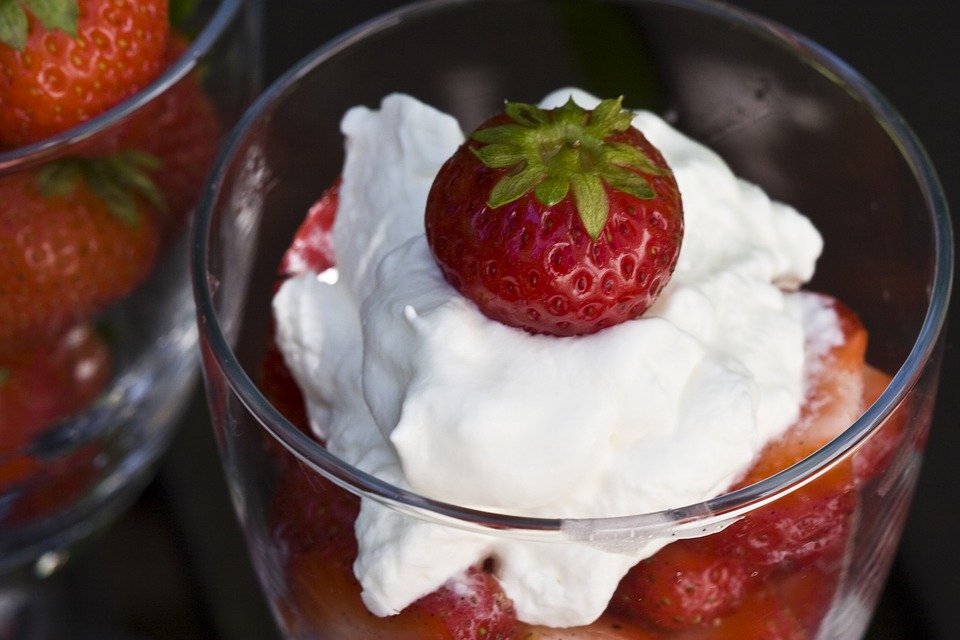This article delves into the question of whether cats can safely enjoy a scoop of ice cream, exploring the potential benefits, risks, and alternatives for feline treat options. We'll examine the ingredients found in ice cream, their impact on cats, and provide expert advice from veterinarians on how to keep your feline companion healthy and happy.
Part 1: Decoding the Allure of Ice Cream for Cats

1.1 A Natural Curiosity: Cats and New Foods
Cats, by nature, are curious creatures with a keen sense of smell. The tempting aroma of sweet, creamy ice cream often triggers their instinct to investigate. However, their digestive systems and nutritional needs differ significantly from those of humans, making this seemingly innocent treat a potential health hazard.
1.2 The Appeal of Cold Treats: A Sensory Experience
The cold, smooth texture of ice cream is often appealing to cats, particularly in hot weather. They may instinctively associate the coolness with a refreshing sensation, similar to how they enjoy licking cool surfaces or water.
Part 2: The Hidden Dangers of Ice Cream Ingredients

2.1 Dairy: A Dietary Dilemma
Ice cream's primary ingredient, dairy, poses a significant threat to feline health. Cats lack the necessary lactase enzyme to break down lactose, the primary sugar in milk and cream. This leads to:
- Digestive Distress: Lactose intolerance results in diarrhoea, vomiting, gas, and abdominal pain.
- Potential for Allergies: Some cats may develop an allergic reaction to dairy proteins, leading to skin problems, respiratory issues, and even anaphylaxis.
2.2 Sugar: A Sweet But Unhealthy Addiction
The high sugar content in ice cream is a major concern. Cats do not require added sugar and excessive consumption can lead to:
- Obesity: Excess sugar contributes to weight gain, increasing the risk of diabetes, joint problems, heart disease, and a reduced lifespan.
- Dental Issues: Sugar promotes bacterial growth in the mouth, leading to plaque buildup, tartar, gum disease, and tooth decay.
2.3 Artificial Sweeteners: A Deadly Deception
Certain ice cream varieties use artificial sweeteners, such as xylitol. This is highly toxic to cats and can cause:
- Liver Failure: Xylitol interferes with liver function, leading to liver failure and death.
- Rapid Onset of Symptoms: The effects of xylitol are often rapid, making immediate veterinary attention crucial in cases of accidental ingestion.
2.4 Chocolate: A Tempting but Toxic Treat
Chocolate, particularly dark chocolate, contains theobromine, a compound that cats cannot metabolise effectively. This can lead to:
- Vomiting and Diarrhoea: Theobromine irritates the gastrointestinal tract, causing vomiting and diarrhoea.
- Hyperactivity and Restlessness: Cats may exhibit increased restlessness, panting, and thirst.
- Cardiac Problems: In severe cases, theobromine can damage the heart and lead to death, especially in small cats or those with pre-existing health conditions.
2.5 Nuts: A Choking Hazard and Potential Toxicity
Nuts, commonly added to ice cream flavours, present several risks for cats:
- Choking: Whole nuts can be a choking hazard, especially for smaller cats.
- Digestive Issues: Nuts are difficult to digest for cats, potentially causing vomiting, diarrhoea, and intestinal blockages.
- Toxicity: Some nuts, like macadamia nuts, are toxic to cats, causing weakness, tremors, and paralysis.
Part 3: The Impact of Ice Cream on Cat Health
3.1 Digestive Upset: A Common Consequence
The combination of lactose, sugar, and other ingredients can wreak havoc on a cat's sensitive digestive system. Symptoms commonly include:
- Diarrhoea: Loose stools or frequent bowel movements are a primary indication of digestive upset.
- Vomiting: Cats may vomit up partially digested ice cream, often accompanied by nausea.
- Gas: The fermentation of lactose in the intestines can lead to excessive gas and bloating.
- Abdominal Pain: Cats may display signs of discomfort, such as hunching, restlessness, and vocalisation.
3.2 Weight Gain and Obesity: A Threat to Longevity
Ice cream's high calorie content, combined with the lack of essential nutrients, significantly contributes to weight gain in cats. Obesity leads to:
- Increased Risk of Diabetes: Obesity is a primary risk factor for diabetes, a serious condition that can cause long-term health problems.
- Joint Problems: Excess weight puts strain on joints, leading to arthritis and other mobility issues.
- Cardiovascular Disease: Obesity increases the risk of heart disease, including heart failure and hypertension.
- Liver Disease: Fat accumulation in the liver can lead to fatty liver disease, a potentially life-threatening condition.
- Reduced Lifespan: Obese cats have a shorter lifespan compared to healthy-weight cats.
3.3 Pancreatitis: A Painful Inflammation
Excessive fat intake, such as that found in ice cream, can trigger pancreatitis, an inflammation of the pancreas. Symptoms include:
- Severe Abdominal Pain: Cats may exhibit pain, lethargy, and vocalisation.
- Loss of Appetite: They may refuse to eat, leading to dehydration and weight loss.
- Vomiting and Diarrhoea: These symptoms can be severe and persistent.
Part 4: Vet-Approved Alternatives for Feline Treats
4.1 Nutritional Treats: A Healthier Choice
Commercially available cat treats are designed to provide essential nutrients and flavours while remaining safe and digestible for cats:
- Dry Treats: Crunchy and often made with meat-based ingredients, they offer a low-calorie option.
- Wet Treats: Softer and more palatable, they contain higher moisture levels for hydration.
- Homemade Treats: Always consult your veterinarian before preparing homemade treats to ensure they are safe and nutritionally balanced.
4.2 Safe and Fun Activities: Enriching Experiences for Cats
Providing stimulating activities is a more rewarding and healthy alternative to tempting treats:
- Interactive Toys: Toys that encourage chasing, pouncing, and problem-solving provide mental and physical stimulation.
- Scratching Posts: Cats naturally need to scratch, and designated posts can prevent them from scratching furniture.
- Catnip: This natural herb offers a safe and enjoyable experience for many cats, stimulating play and relaxation.
Part 5: Expert Insights on Feline Nutrition
5.1 Veterinarian Advice: Prioritising Cat Health
"While the temptation to share your ice cream with your cat may be strong, it's crucial to remember that their dietary needs are vastly different from ours," says Dr. Sarah Jones, a renowned veterinary specialist. "Ice cream can lead to a host of health problems for cats, including digestive upset, obesity, and even more serious conditions. Instead, focus on providing them with nutritious and safe treats specifically designed for their unique needs."
5.2 Cat Behaviour Specialist Perspective: Understanding Feline Motivations
"Cats are highly motivated by taste and texture," explains Dr. Mark Smith, a renowned cat behaviour specialist. "They may be drawn to the cold, creamy texture of ice cream, but it's important to redirect their attention towards safe and stimulating activities. Playing with interactive toys, using catnip, and providing them with designated scratching posts can offer more enriching experiences that promote their physical and mental well-being."
Part 6: Frequently Asked Questions
6.1 Is a small amount of ice cream okay for my cat?
Even a small amount of ice cream can pose risks to your cat's health. It's best to avoid giving your cat any ice cream at all.
6.2 Are there any specific ice cream flavours that are safer for cats?
No, there are no safe ice cream flavours for cats. All types of ice cream contain ingredients that can be harmful to their health.
6.3 What should I do if my cat eats ice cream?
If you suspect your cat has eaten ice cream, it's essential to monitor them closely for any signs of illness. Contact your veterinarian immediately if you notice:
- Vomiting
- Diarrhoea
- Loss of appetite
- Lethargy
- Abdominal pain
6.4 Are there any natural alternatives to ice cream for cats?
Yes, there are some safe and healthy alternatives to ice cream for cats:
- Frozen cat food: Simply freeze some of your cat's favourite wet food for a refreshing treat.
- Frozen tuna juice: Offer a small amount of frozen tuna juice in a cat-safe ice cube tray.
- Frozen water: A simple bowl of frozen water can be a fun and refreshing alternative.
6.5 How can I keep my cat from begging for ice cream?
It's important to train your cat from a young age that ice cream is off-limits. Avoid giving them any scraps or licks. Instead, focus on providing them with positive reinforcement for good behaviour and healthy treats specifically designed for cats.
Everyone is watching

Are Cat Ribs Flexible? Understanding Their Anatomy
CATS & KITTENSThis article delves into the fascinating world of feline anatomy, exploring the flexibility of cat ribs and ho...

Can Cats Eat Bananas? (Everything You Need to Know)
CATS & KITTENSThis article dives into the intriguing question of whether cats can safely enjoy the sweet, yellow fruit, bana...

Cat Lifespan: How Long Do Cats Live?
CATS & KITTENSThis comprehensive guide explores the factors influencing the lifespan of our feline companions, providing ins...

Can Cats Get COVID-19? What You Need to Know
CATS & KITTENSThis article will delve into the fascinating world of feline COVID-19 susceptibility. We'll explore whether ca...

Can Cats Eat Eggs? A Complete Guide to Egg Safety for Your Feline Friend
CATS & KITTENSWhen it comes to treating our furry companions, we all want to ensure we're doing what's best for them. Eggs...
